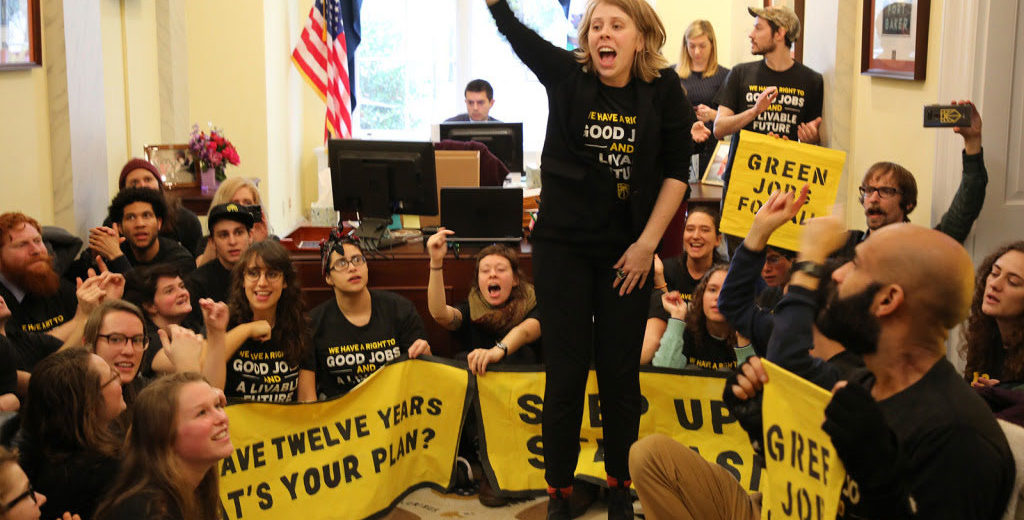As bright minds dig into the details of this proposal, it’s critical to keep in mind the role of food production in the climate crisis.
By Anna Lappé, Earth Island Journal
2009. That was the last year there was any significant legislation on the table to confront the climate crisis barreling down on us. The Waxman-Markey Bill passed in the House and failed in the Senate. And that was it: Over and out. Fossil fuel companies helped kill that bill and anything else aimed at regulating the industry, spending an estimated $2 billion since 2000 alone.
These billions have landed blow after blow to the environmental movement and, in turn, to the planet. Now, a new Congress and reenergized environmental movement is breathing fresh life into the idea of comprehensive climate change policy — and food and agriculture could, and should, play a starring role. The Green New Deal is what it’s being called, which The Hill characterizes as “a climate change initiative that aims to fight carbon emissions by transitioning the country to 100 percent renewable energy use.”
Few around the country had even heard of it just a few months ago. But in last year’s mid-term elections a number of the winning candidates, including Congresswoman Alexandria Ocasio-Cortez, ran on a platform that included the Green New Deal. A week after those elections, the youth-led Sunrise Movement occupied House Speaker Nancy Pelosi’s office demanding a select committee on the Green New Deal to hash out just what this bold vision could look like. By December 2018, a whopping 81 percent of all registered voters in a George Mason and Yale University poll — Democrats, Republicans, and Independents alike — either somewhat or strongly supported the idea of a Green New Deal. Said Saikat Chakrabarti, chief of staff for Ocasio-Cortez, “We thought it would take a year to get a movement going around the Green New Deal … [Instead] it took weeks.”
While a select committee with teeth was replaced with a climate-focused committee that has more limited powers, the conversation has shifted and popular imagination has been ignited. As bright minds dig into the details, and movements continue applying pressure, it’s critical to keep food at the forefront, not least because our food producers are so vulnerable to the crisis. As Renata Brillinger from the California Climate and Agriculture Network notes: “Farmers and ranchers are on the frontlines of the impacts of climate change, facing drought, wildfires and record-breaking weather extremes.”
But food and agriculture should also be central to a Green New Deal because food producers can play a critical role in climate mitigation and adaptation. As Brillinger adds: Farmers and ranchers “are also on the frontlines of delivering powerful solutions that cut emissions and — importantly and uniquely — sink carbon by improving soil health.”
This food-friendly Green New Deal can take a page from the Golden State, learning, for instance, from the work done by Brillinger and her network, which has helped to pass a suite of agriculture programs that have moved more than $200 million to farmers to incentivize storing carbon, saving water and energy, reducing methane emissions on livestock operations, and permanently protecting agricultural land. This precedent-setting policy could inspire one comprehensive food and agriculture component of the Green New Deal.
It’s impossible to predict what happens next. One thing we do know: Sitting on the sidelines will only help ensure nothing does. Putting our voices behind a big and bold vision, and including food at its heart, could just made the Green New Deal a reality.
Header photo by Sunrise Movement




